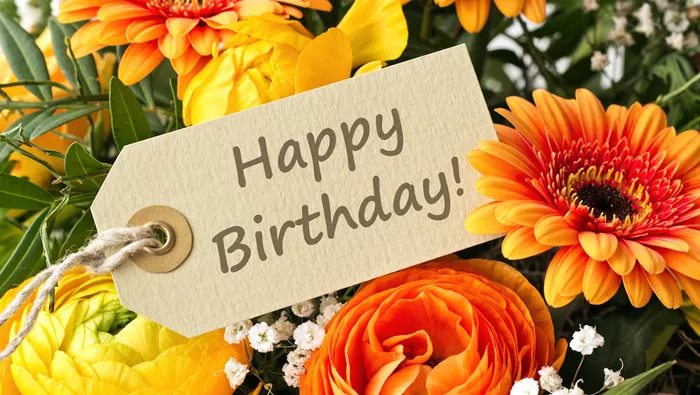From zodiac signs to birthstones, many of us are familiar with the symbols tied to our birth month — but did you know each month also has its own pair of flowers? These birth month blooms not only mark the seasons they thrive in, but they also carry symbolic meanings rooted in tradition, folklore, and nature’s rhythms. From January’s delicate snowdrops to December’s festive holly, each flower reveals something special about the time of year — and perhaps even something about you.
Here’s a month-by-month guide to birth flowers and what they symbolize:
January: Carnation & Snowdrop
Primary – Carnation:
Known for their ruffled petals and clove-like scent, carnations are vibrant flowers that bloom in many colors. They symbolize love and admiration, with pink carnations often representing a mother’s love.
Secondary – Snowdrop:
As one of the first flowers to bloom in winter, snowdrops are tiny white blossoms that symbolize hope and comfort during dark times. Their name comes from Greek words meaning “milk flower.”
February: Violet & Primrose
Primary – Violet:
These purple woodland flowers are symbols of modesty, loyalty, and remembrance. Despite their name, violets can also appear in blue, yellow, and white shades.
Secondary – Primrose:
Blooming early in the year, primroses come in soft pastels and symbolize young love, safety, and protection. The name comes from primus, Latin for “first,” reflecting its early bloom.
March: Daffodil & Jonquil
Primary – Daffodil:
Bright and cheerful, daffodils bloom at the first sign of spring. They represent rebirth, fresh starts, and happiness.
Secondary – Jonquil:
A close relative of the daffodil, the jonquil shares similar meanings of renewal and hope. The difference lies in the flower’s clustered blooms and stronger fragrance.
April: Daisy & Sweet Pea
Primary – Daisy:
Daisies open with the sun and close at dusk, earning them the nickname “day’s eye.” They symbolize purity, innocence, and loyal love.
Secondary – Sweet Pea:
Sweet peas smell wonderful and come in many colors, but they’re not edible. They represent farewells, gratitude, and kind-hearted friendship.
May: Lily of the Valley & Hawthorn
Primary – Lily of the Valley:
This bell-shaped bloom is delicate and fragrant. Despite the name, it’s part of the asparagus family. It symbolizes humility, sweetness, and purity.
Secondary – Hawthorn:
Hawthorn is a tree or shrub with thorny branches and small red fruits. It symbolizes hope, protection, and healing.
June: Rose & Honeysuckle
Primary – Rose:
June’s flower is the iconic rose — a symbol of love and beauty. Different colors have different meanings, but all roses convey affection.
Secondary – Honeysuckle:
With its sweet scent and nectar, honeysuckle represents the joys of love and the sweetness of new beginnings.
July: Larkspur & Water Lily
Primary – Larkspur:
Tall and colorful, larkspurs grow in early summer. Although beautiful, they’re toxic and should be admired from a distance. They symbolize positivity, grace, and open hearts.
Secondary – Water Lily:
Floating on ponds and lakes, water lilies open and close with the sun. They symbolize purity, peace, and the calming beauty of nature.
August: Gladiolus & Poppy
Primary – Gladiolus:
With tall stems and bright blossoms, gladiolus flowers represent strength, honesty, and remembrance.
Secondary – Poppy:
Known for their vibrant petals and calming seeds, poppies are symbols of peace, sleep, and reflection — especially red poppies, which represent remembrance.
September: Aster & Morning Glory
Primary – Aster:
Asters bloom in late summer and early fall, often in purple and white. They symbolize wisdom, patience, and love.
Secondary – Morning Glory:
These delicate flowers bloom early and fade by afternoon. Each color has its own meaning: blue for faith, red for desire, and white for truth.
October: Marigold & Cosmos
Primary – Marigold:
With bold yellow and orange petals, marigolds stand for warmth, success, and cheer. They were once thought to be harmful, but are now seen as bringers of light.
Secondary – Cosmos:
Named after the Greek word for order and beauty, cosmos flowers come in rich autumn shades and are believed to promote balance and good health.
November: Chrysanthemum & Peony
Primary – Chrysanthemum:
A common flower in late fall, chrysanthemums are loved for their layers and variety. They symbolize joy, loyalty, and friendship.
Secondary – Peony:
Though not officially agreed upon, peonies are often seen as a second November flower. With lush petals and multiple forms, they symbolize beauty, mystery, and deep thought.
December: Paperwhite Narcissus & Holly
Primary – Paperwhite Narcissus:
These white flowers bloom indoors during winter and are known for their clean scent. They represent self-respect, clarity, and unconditional love.
Secondary – Holly:
Holly plants, with their sharp leaves and red berries, are tied to ancient traditions. They symbolize protection, good fortune, and the return of light in dark times.
The Story Behind Birth Flowers
Carol Connare, Editor-in-Chief of The Old Farmer’s Almanac, explains that the idea of birth flowers comes from ancient traditions across the globe. “The symbolic meanings of flowers go back to myths in Greece and old stories from China, Egypt, and Europe,” she says. These meanings have been passed down for centuries and continue to add beauty and depth to birthday celebrations today.


